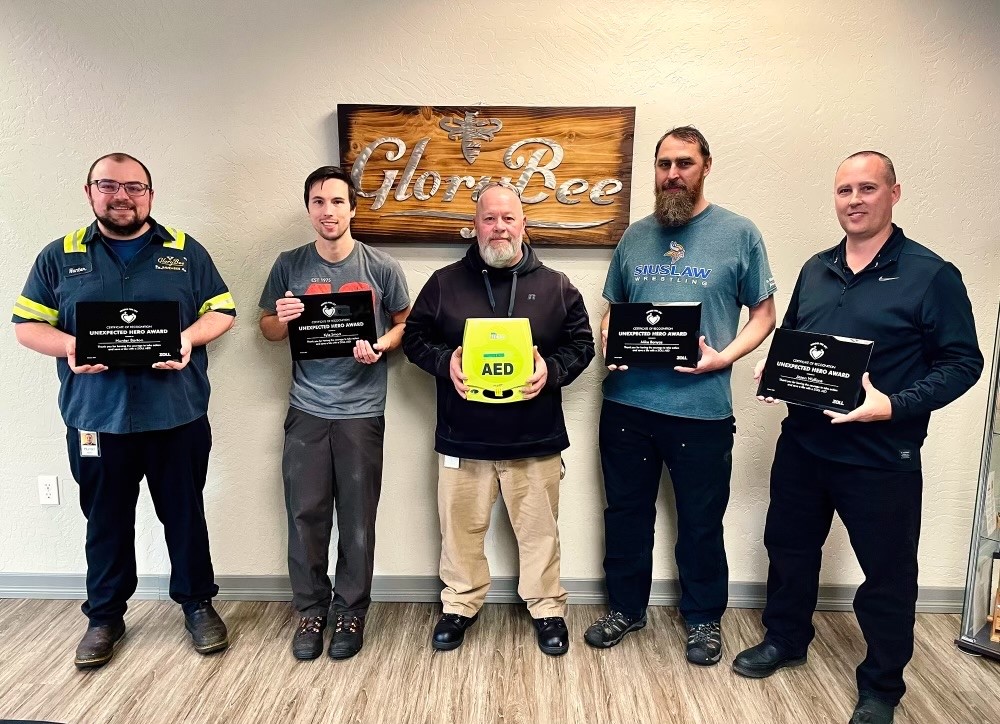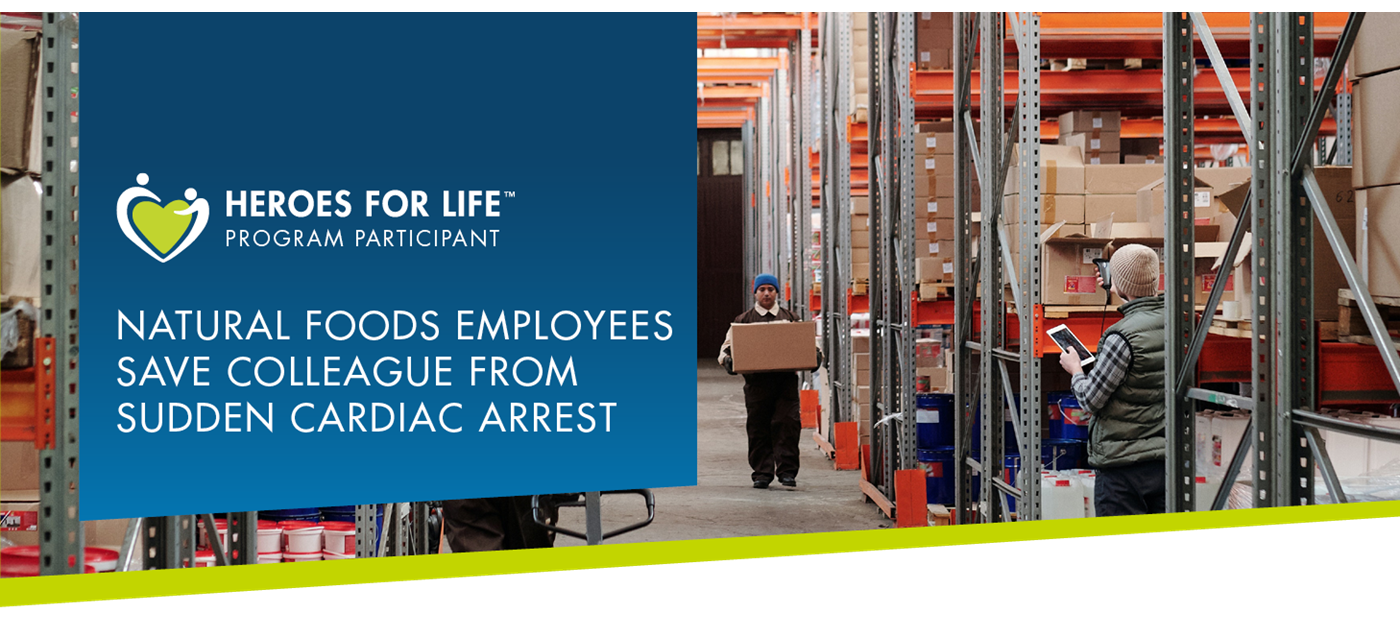Employee health and safety manager Jason Wallace splits his time between GloryBee’s corporate headquarters and its production facility, both in Eugene, Oregon. A distributor of natural and organic honey and other baking ingredients, GloryBee has been producing and selling honey from around the world since 1974. Its production facility faces the typical production and shipping challenges, but nothing extraordinary, except maybe the occasional swarm of local bees in warmer weather.
On a recent Friday while visiting GloryBee’s corporate headquarters, Jason answered a call from executive assistant Tisha Diffie at their production facility and heard only three words: “Get here now!”
Tisha’s call was prompted by the news that an employee, Jimmy Spears, had collapsed. While Tisha made that call, employee Donald Crapser was calling 911 and his coworker Hunter Barton was heading to his desk in shipping and receiving. As Hunter rounded the corner, he saw colleagues Mike Banyas and Jimmy Spears on the floor. Mike was kneeling next to Jimmy, who appeared unconscious.
Warehouse becomes a hive of activity
Hunter immediately asked employee Kyle Smart to run and get the automated external defibrillator (AED) in the warehouse. Hunter checked Jimmy’s pulse and tried to get him to respond. “Jimmy had labored breathing, maybe one breath every 10 to 15 seconds and his pulse was fast and light,” Hunter recalls.

When Kyle returned with the ZOLL AED Plus®, Hunter and Mike followed the 911 operator’s instructions to apply the AED. “I lifted Jimmy’s shirt and put on the pads,” Hunter recalls. The device analyzed Jimmy’s heart rhythm and determined a shock wasn’t necessary. Instead, it instructed Hunter to deliver cardiopulmonary resuscitation (CPR) compressions. “The AED live-coached us to push harder or faster until the EMTs arrived,” Hunter remembers. “The thing I really liked about [using the AED] was the beep it made every time you’re supposed to compress the person’s chest. It was very intuitive.”
“The thing I really liked about [using the AED] was the beep it made every time you’re supposed to compress the person’s chest. It was very intuitive.”
—Hunter Barton, rescuer
Donald put the 911 operator on speakerphone and ran outside to escort the ambulance into the business complex where the facility is located. “It’s kind of a tough spot to find and we were in the back corner of the warehouse,” Donald recalls.
As Jason pulled into the production facility parking lot, EMTs were transporting Jimmy to a local hospital for care with lights and sirens flashing. Jason’s 23 years of experience as an EMT told him it was serious. He was grateful for the way his employees pulled together to help their coworker and especially grateful that they had an AED on site at this location.
An hour later, Jason was briefing the company president when he received a message that Jimmy had called from the hospital to find out what had happened. He was up and talking and had no memory of the incident. Doctors kept Jimmy overnight and monitored him for any additional cardiac issues. He was back to work within 2 weeks and eventually cleared of all restrictions.

